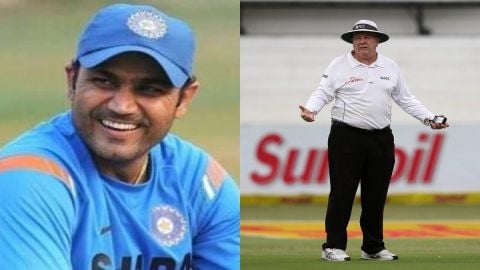
The beloved and famous game of cricket is loved and appreciated by its fans all around the world. The spectators in the stadiums as well as in front of their TV sets & indulge themselves in the game completely, letting the various aspects of the game alter their moods. Many of the fans may not understand the numerous laws and by-laws perfectly, and may even question the umpire's decision at times, but through this article, we'll look back at an incident where Sehwag purposedly kicked the ball to the boundary while fielding and how the umpires and the rules ensured fair play.
In the February of 2018, South Africa was on a tour to India for 2 tests and 3 ODIs. South Africa shocked the world as they won the first test at Nagpur. And not only did they win it, but the Proteas also won it by 6 runs and an innings, which left the Indian players and fans infuriated. Hashim Amla scored an unbeaten 253 runs in the first test while Jacques Kallis scored 173 runs.
Obviously, team India had to win the second test match to level the 2-match series and avoid a home test series defeat, the first in the last six years. South Africa were restricted to 296 runs in the first innings after opting to bat first. Hashim Amla was yet again the top scorer with 114 runs while Alviro Peterson scored 100 runs.



